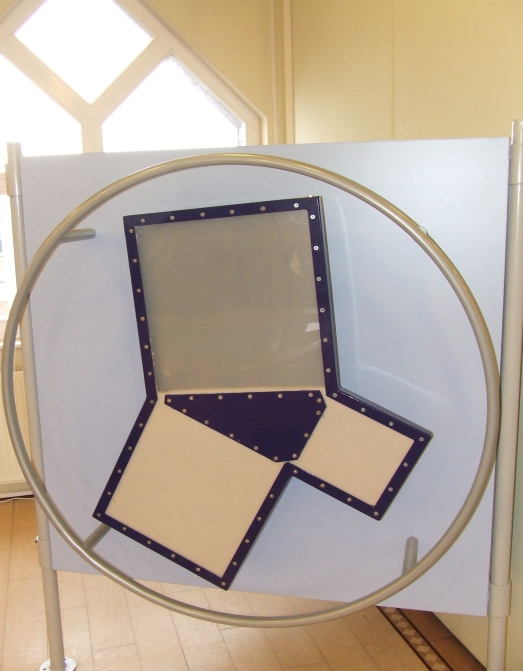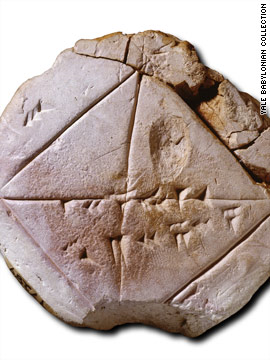Material coming from the smaller squares fills exactly the big square and vice versa. In other words, the volume of the two smaller squares together equal the volume of the biggest square.
We have proved Pythagoras' theorem by the material we poured over. The surface of the big square equals the surface of the two smaller squares together. Since we lifted the squares on the perpendicular triangle in the middle, with this experiment we have proved the theorem.
Pythagoras (about 580−520 B.C.) was a Greek phylosopher, who was acquainted with the mystical science of Egyptian clerks.
Supposedly he heard about the theorem from them, since the Babylonians had known it for 3000 years by then.



